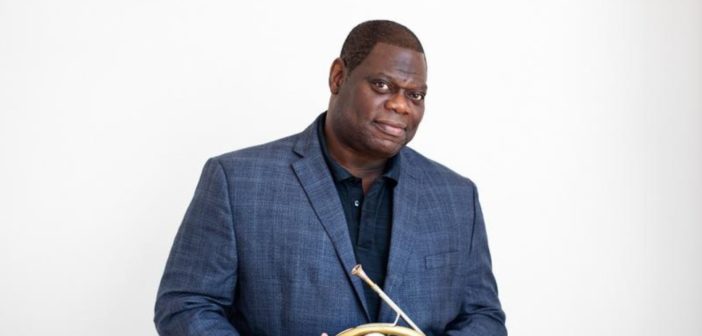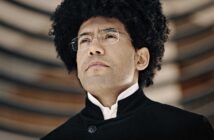Last week I had the pleasure of hearing the Cleveland Orchestra in top form at its home in Severance Hall. A real treat after the COVID-19 restrictions that have restricted access to live music, especially for Canadians travelling to the United States. This week I was in the Motor City to hear the Detroit Symphony Orchestra under its new music director, Jader Bignamini. Once again the music-making was on the highest possible level.
As Canadians are well aware, the U.S. government finally opened its borders to travelers entering the country by car on Nov. 8. It was a welcome relief, especially for this music-lover. However, the trip was not without its challenges and near-misses.
My friend and I crossed the border at Lewiston coming into the U.S. This was quick and efficient. I had arranged for tickets to a Cleveland Orchestra concert on Nov. 11 and that too went off without incident. But then one of the members of the orchestra tested positive for COVID-19 and scheduled repeats of this concert on the weekend were abruptly cancelled.
As we lingered for a few days in Cleveland and after the concert the news from Detroit was not good. A power failure at Orchestra Hall had forced the cancellation of the Friday performance of the program I was scheduled to hear on Sunday. Would there be a Sunday concert?
Fortunately, matters were soon rectified and the Sunday concert went off as scheduled. But hanging over the whole trip was worry about getting back into Canada. A negative COVID-19 test was required for re-entry. Where would we get it? Test results can be no older than 72 hours. Would we get the results in time? What if the result was positive? And could we fill out the ArrivCAN information properly? More about all that later.
Bignamini is a mid-career Italian-born conductor who began his professional musical life as a clarinetist in Milan. He became a protégé of Riccardo Chailly and soon established himself as a conductor to watch. He has since gained wide experience as both a symphony and opera conductor. Bignamini was scheduled to become music director of the Detroit Symphony for the 2020-2021 season. But COVID-19 intervened and there was essentially no season.
Detroiters have seen Bignamini before as a guest conductor but this season they are finally getting to know him as their music director. By all accounts, the results so far have been overwhelmingly positive. And on the basis of the concert I attended – a well-constructed all-American program – I would say that Detroit has landed one of the most charismatic and talented conductors at work anywhere. Both in his conducting and in his comments to the audience Bignamini showed that he has an immense talent for connecting both with orchestras and with audiences. From the moment he came on stage Bignamini took charge with an authority bordering on arrogance. Except that this handsome man has both charm and sex appeal that far outweigh a potentially negative impression. Above all, when he began conducting, he showed that he knows his stuff – he conducts nearly everything from memory – and has a baton technique that is both precise and imaginative.
The concert began with Copland’s El Salón México and the performance had everything one could wish for. All the solo bits were played with technical mastery but also with joy and character. Next came John Adams’s Concerto for Saxophone and Orchestra with Branford Marsalis as soloist. This 2013 piece is a substantial work lasting half an hour. In the program notes the composer provides an interesting commentary on how much he has enjoyed great jazz saxophone recordings over the years. He obviously loves the instrument.
Unfortunately, his concerto is boring and monotonous, with scarcely a hint of jazz. Marsalis ploughed heroically through the thousands of notes he was given to play, but had little opportunity to show his stature as a jazz soloist. I came away from the performance wondering if the alto saxophone has either the range or the tonal variety to be featured in a symphonic concerto. But we know from listening to all those great jazz players that it does have much to say and many ways to say it; a pity that John Adams wasn’t able to find them.
After intermission came another recent concerto by an American: Paradise Valley Serenade for solo wind quintet and orchestra by Jeff Scott. Unlike the Adams, this is a crowd-pleaser. It showed off the solo instruments and comfortably blended jazz and symphonic elements. Scott was in Orchestra Hall for the premiere of his new piece and the audience gave him the applause he deserved.
Finally, Bignamini gave us the familiar Robert Russell Bennett arrangements of tunes from Gershwin’s Porgy and Bess. Bignamini teased every ounce of expression out of “Bess, You Is My Woman Now” and raised the roof with “I’m On My Way.” Incidentally, the instrumentation for this piece listed in the program was not accurate: it left out the vitally important banjo and three saxes.
The DSO was one of the first American orchestras to regularly stream its concerts and is doing so again this season. This is a good opportunity to see the orchestra’s new boss in action. Don’t miss a stunning version of Respighi’s Pines of Rome from earlier this season. For details visit the orchestra’s website at www.dso.org.
So to sum up: In the past week I was able to drive to Cleveland to hear a terrific concert featuring the phenomenal Tom Borrow with the Cleveland Orchestra, then continue on to Detroit to experience a charismatic conductor just taking up his post. And remember that this was the first time in about 18 months that it has been possible for a Canadian to make such a trip.
But now we come to the heart of the matter. How easy was it to cross back again into Canada, and was it worth the trouble? Yes, there is definitely trouble and plenty of it. The big issue is the test. Any Canadian coming back from the U.S. must present proof of a negative COVID-19 test. The test must be done in the U.S. not more than 72 hours before presenting oneself at the border. So even before leaving Canada I made arrangements for the tests. Based on my itinerary it would have to be done in Detroit. We planned to return to Canada on Nov. 17 and we were arriving in Detroit on Nov. 14. So that meant we had to get our tests done that very day of arrival to make sure we got the results back in time to cross on Wednesday.
And not just anytime on Wednesday. Canadians must also fill out in advance all the information needed for the ArriveCAN app. This too is a federal government requirement which involves, among other things, uploading a page from your passport and a photo of your proof of vaccination. And stating the specific time when you intend to cross back into Canada. I chose 10 a.m. on Nov. 17. I had been told that getting test results might take two to three days so I had to factor this into my calculations too.
In any case, before I left Toronto I scoured possible sites for COVID-19 tests in Detroit and found that CVS Pharmacies do them. But not every CVS store. So I tried to find one that did tests near my hotel. I found one I thought would be suitable and booked appointments. No walk-ups!
My friend and I drove up to Detroit from Toledo on the morning of Nov. 14 for our 11 and 11:10 a.m. appointments at a CVS Pharmacy on Campbell Road. It turns out the store was in an Hispanic section of town about six miles from the hotel. And the test was to be done at a drive-through window in the pouring rain. We arrived before the appointed time and were told there was no way the test could be done earlier because there was no one there to do it. Then at the appointed time we were told that the store’s computers were down. No point getting upset because the alternative was to try to find another place to take the test and no guarantee that such a place could be found at this late date.
A half-hour goes by and finally computer issues are solved and there is a nurse practitioner now on site to do the job. But wait! It is a do-it-yourself job! The NP hands us brown paper bags and offers instructions as to how we can self-administer the test as she sits inside and we sit in my car at the drive-through window. We have no choice but to follow orders, the test gets done and my swab is dumped in a box, presumably to be picked up by someone sometime to be taken to a lab somewhere and results will be sent to us somehow in “2-3 days.” Mercifully, in spite of everything we have heard about charges of $200 or more for such tests, there was no charge at all.
So at least we got the tests done. Now all we had to do was hope the results arrived in time. But our day was only beginning. We had yet to check into the hotel and had the Detroit Symphony concert at 3 p.m. Could be get an early check-in? I feared the worst because when I first explored booking our hotel the room rate was $162, But the next time I looked, after coordinating concerts in Cleveland and Detroit in the same week to make sure there was something worth the trip in both places, the rate had shot up to $300-400! And, in fact, there were hardly any rooms at all to be had that weekend in Detroit. I knew there must be some big event going on – perhaps a convention – but I had no idea what it was.
So I presented myself at the Hilton Garden Inn only to discover that there was a Detroit Lions football game going on nearby that afternoon, and the next night at Ford Field (seating capacity 60-70,000) the legendary Rolling Stones were making a rare appearance. I assumed that any chance of an early check-in had just gone down the drain but the gods must have been smiling on us – at least at that moment. We got a room even though we couldn’t actually get in it because a repairman was busy doing some caulking in the bathroom.
Over the next few days we basked in the fond memories of a great concert by Bignamini and the Detroit Symphony and I checked my phone every few hours to see if our test results have arrived. On Tuesday afternoon said results duly arrive and we jump for joy on seeing the hoped for word “negative” in both of them.
The next morning we have our documents in order – most of them on my iPhone – and head for the Ambassador Bridge to cross back into Canada. But we were still apprehensive, in spite of the negative test results, because the whole process is so confusing and downright intimidating. What if we have forgotten something? What if we have filled out the ArriveCAN document incorrectly?
There was virtually no traffic on the bridge when we crossed and little waiting time. I assumed the officer would want to see the ArriveCAN document first because the Canadian government so often stressed its importance on their websites, and because it included all the relevant personal information and then some. But our officer did not want to see it at all. Perhaps he had it already in his own system but if he did he didn’t tell us. He wanted our passports and then proof of a negative COVID-19 test. Because like most Canadians returning from the U.S. we did not have access to printers to make paper copies of the test results I had to access them through the CVS website on my iPhone while being interrogated at the border. This meant I had to type in my user name and password to get to my test result then hand him my phone. And then I had to do the same thing again for my friend.
In summary, while it is magnanimous for the United States to allow Canadians to enter their country once again, it is absurd that Canada still insists that fully vaccinated returning Canadians present negative test results before being allowed back. There is no scientific basis for this procedure, and as a practical matter it is beyond annoying. Until our politicians do away with this regulation it is not worth the time and aggravation it takes to comply. COVID-19 is no joke but science and common sense seem to be unusually short supply at the moment.
















